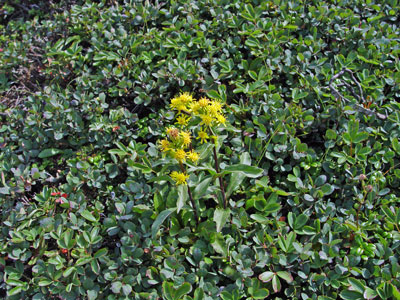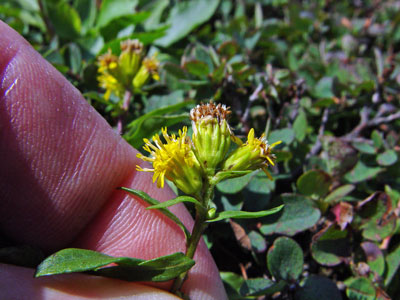DACF Home → Bureaus & Programs → Maine Natural Areas Program → Communities, Plants, and Animals → Rare Plants → Solidago leiocarpa

Solidago leiocarpa DC.
Culter's Goldenrod
- State Rank: S1
- Global Rank: G3
- State Status: Threatened
Habitat: Granitic alpine areas, higher mountains. [Alpine or subalpine (non-forested, upland)]
Range: Mountains of northern New England and northern New York.
Aids to Identification: This goldenrod is only 5-35 cm in height with the majority of the leaves growing around the base. The capitula (flower heads) are borne in a terminal corymb-like cluster and/or axillary clusters. Each capitulum is comprised of 30-50 individual flowers, which is more than most other goldenrods. The ovary and fruit body is pubescent.

Ecological characteristics: All Maine occurrences of this goldenrod grow at elevations usually greater than 1000 meters.
Phenology: Flowers July - September.
Family: Asteraceae
Synonyms: Solidago cutleri Fern.; Solidago virgaurea L. var. alpina. This taxon was previously tracked in Maine as Solidago multiradiata Ait. var. arctica (DC.) Fern.; this was misapplied to Maine plants and represents part of the variation displayed by the species, which is not found in New England.
Known Distribution in Maine: This rare plant has been documented from a total of 6 town(s) in the following county(ies): Oxford, Piscataquis, Somerset.
Reason(s) for rarity: Endemic to a small area; habitat naturally scarce.
Conservation considerations: Populations could be threatened by heavy recreational (hiking) use.